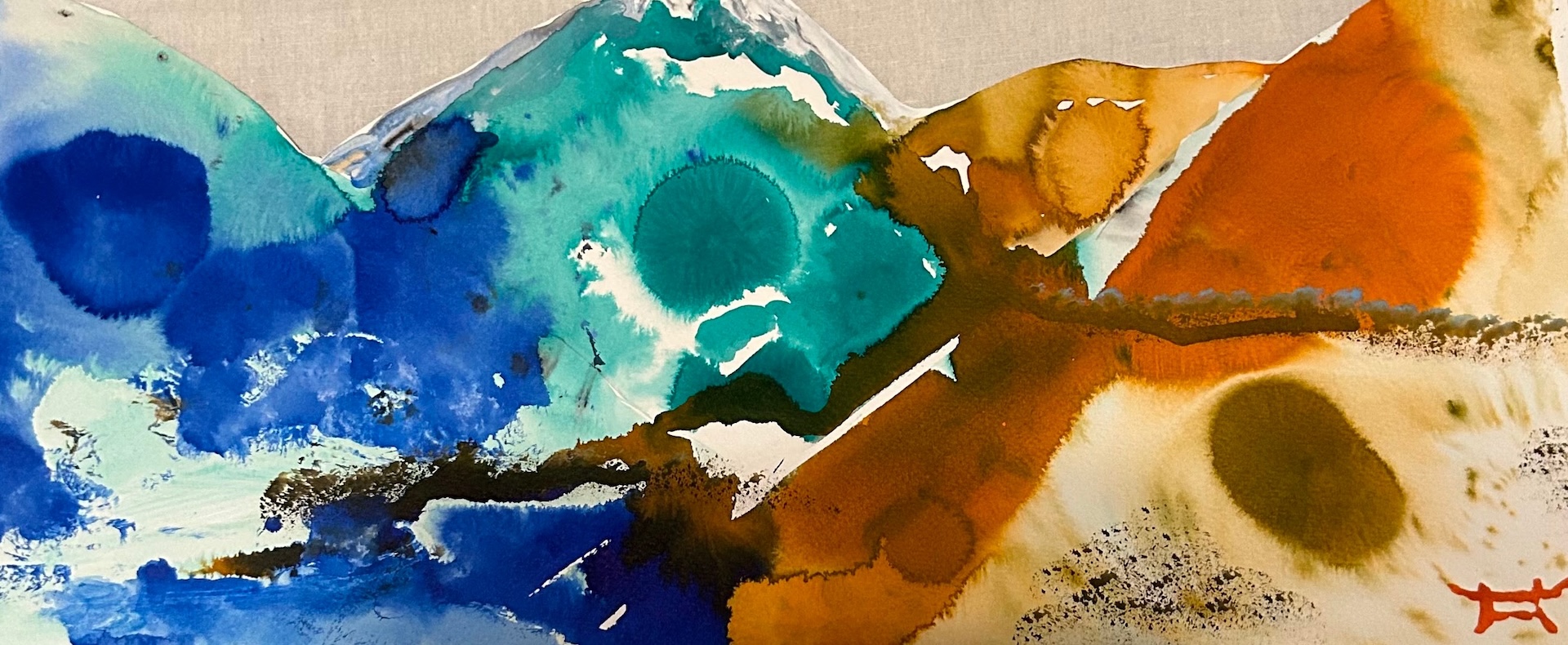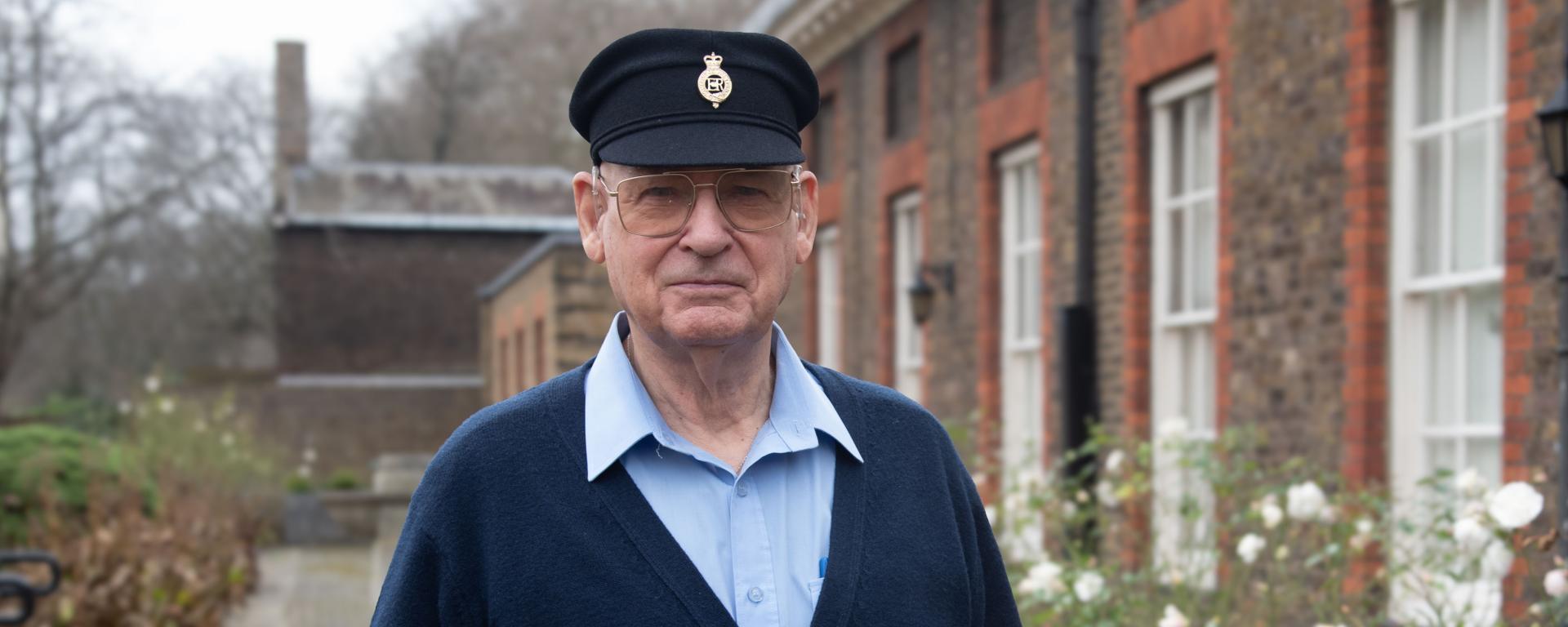Meet Roger Hall
Joining the British Army at 15 years old, Chelsea Pensioner, Roger, has had a varied military career. Initially, he joined the Junior Leaders Regimental Royal Armoured Corps and later served with The Life Guards, Royal Logistic Corps as well as the Royal Electrical and Mechanical Engineers. Roger shares more on his time in the Army…
Land or Sea
Born in Southeast London, Roger was not unfamiliar with the Armed Forces growing up.
“I come from a naval family. My mother was a Wren (Women’s Royal Navy Service) during the Second World War. My father joined the Royal Navy as a boy just before the Second World War. He joined the month of his fifteenth birthday. That was February and that year, the war began in September. So, he got moved to the Isle of Man where he completed his training.
I had planned to go into the Royal Navy too, but when everyone said ‘what a good idea’, the rebellious teenager in me thought, I’ll join the Army instead!
I joined the Army aged 15. Just after my birthday in December. I started at Bovington in the January. Incidentally, C Squadron huts (spiders) were where the tank museum is situated now.
I had been at Bovington for six months when my father who was a Station Officer in The London Fire Brigade stationed in the East End applied for and was successful in a transfer as an Assistant Divisional Officer in The Fife Fire Brigade. My next leave then was from Dorset to Kirkcaldy Fife by train. This was a long journey on steam engine trains and the first time I had left England. I sometimes stayed at the Union Jack club for long weekends because of the distance. This is where I was drawn to The Life Guards!”
Ferrets, Saladins and Radio Operations
During his time in The Life Guards, Roger worked as a Surgeon's Radio Operator, Ferret scout car driver and Saladin armoured car crewman.
“Although I had done all my Junior Leaders training on tanks, I preferred the reconnaissance roll of the Royal Armoured Corps, especially when I had heard that The Life Guards were due a tour in the Far East.
Ferrets and Saladin Armoured cars being wheeled vehicles were very agile. They were designed to work behind enemy lines to get information back. In Hong Kong, during the riots and the border incursion we used the cars for roadblocks and rapid deployment into trouble spots."
"I was a crewman that meant we could do one another’s jobs. I would sometimes take over the driver’s duties and my mate, John, would take over mine in the turret. We swapped quite a bit as we both enjoyed the challenge. We were both trained on Ferret and Saladin’s."
I’d only been in The Life Guards a few weeks when I was 18 and those on the Square converting to Sabre and dismounted Cavalry drill were deployed to Cyprus for the emergency. I was in RHQ troop as the Surgeon’s radio operator. It was the first time I had been abroad! We became United Nations troops - some of the first in Cyprus. We changed our beret to United Nations blue, complete with cap badge. I still have the badge.
When I came back from Cyprus the regiment was reorganised. I moved into B Squadron ready to go to the Far East. I was a ferret driver at first then moved into a Saladin as the Radio operator/gunner. We originally were in Malaya waiting our time to go in rotation to Sarawak, but the conflict ended so my Squadron was deployed to Hong Kong to take over the Armoured Roll in the new territories at Sek Kong airstrip previously done by a tank Squadron.”
“I completed a three-month tour on HMS Fearless. That was 1969. We were armoured support for the Royal Marines Commando on HMS Fearless."
HMS Fearless
During his time in The Lifeguards, Roger also spent some time at sea.
We sailed from the UK into the Mediterranean doing exercises and beach landings with British and Italian forces. That was in Sardinia, Cyprus, Gibraltar and Malta. Whilst in Malta we were recalled to the ship during an exercise with the local garrison and set sail immediately. In Gibraltar, we left the ship and our vehicles with a reduced LAD to complete maintenance. We flew home in Beverly aircraft, refuelling in Portugal due to weight. The ship then preceded to Nigeria where it was used as a communication centre for the Rhodesia Independence talks.
On receiving our Vehicles back, we sailed again this time on The St Tristan heading for the South of France. Somehow, we did a right turn so then went first to Londonderry then to Hollywood NI. This was the summer of 1969, and the Troubles were just beginning."
"The Army was still where I wanted to be."
Like his father, Roger went on to join the Fire Brigade upon leaving the Army.
“My father was in the fire service so I thought I would give that a go. I had to get back to a good fitness level, but I think having been a soldier, I was used to that. But I just couldn’t settle. The Army was still where I wanted to be. I had been out of the army for 18 months, so it was back to basic training which I completed with the Royal Logistics Corps at Aldershot.
After, I transferred to the Royal Electrical & Mechanical Engineers. I trained as a recovery mechanic. I got selected to go to a technical group REME in Chertsey which was a trials unit – we used to trial all the military equipment and vehicles. On promotion, I was posted to Minden in Germany (BOAR) as the Corporal Recovery Mechanic in the Light Aid Detachment, first to the Gloucestershire Regiment and then to Cheshire Regiment.
I had to leave the Army again, however, for family reasons. When I came out, I completed a course on agricultural machinery repair and maintenance. From there, I became a field service engineer. I worked across the Southeast and London on electric forklift trucks.
During that time, someone I knew from the Army was truck driving to Portugal and he asked if I wanted to go on a trip. So, I did. I got offered a job as I had my truck driving license so became an international truck driver for a while. I did that until I retired.”
Life as a Chelsea Pensioner
Roger joined the Royal Hospital Chelsea in March 2022 and is an active member of the community.
“I’ve always tried to keep fit and eat healthy. I used to do yoga so I thought I would join the tai chi class here. I take part in the ballet movement classes too and like to go to the gym. It keeps me active which is good. I’m also really into my art, I love drawing which I’ve been able to do quite a bit here.

"Before I joined the Army, my art teacher at school wanted me to go to art college. I had a bit of a flair for it, but I decided not to. I hadn’t really done anything since coming here. I’ve picked it up again which I’ve really enjoyed."
One morning a week, usually Wednesday, I volunteer at the Household Cavalry Museum on Horse Guards. I really enjoy doing that. I get to meet the public in my Scarlets and pass on my regimental knowledge.
I’ve really liked my time at the Royal Hospital so far. I still like to get away from time to time. I like going on holiday, but I love it here.”

